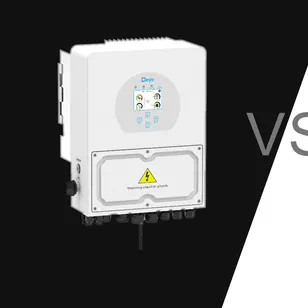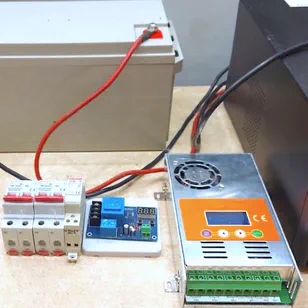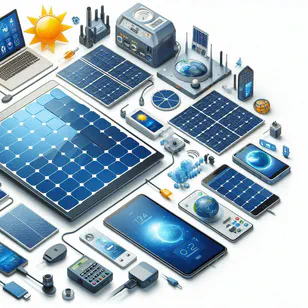Introduction
When integrating a generator into a solar power system or large uninterruptible power supply (UPS), certain technical nuances come into play. Most solar inverters are sensitive to the quality of incoming AC power. There are three key requirements: a clean sine wave, voltage within acceptable limits, and a frequency of 50 Hz. Only inverter generators can meet these specifications consistently. Even with an AVR (automatic voltage regulator) stabilizer, a non-inverter generator won’t work properly, as solar inverters detect the power as “incorrect” and block it from charging the battery or powering loads.
Some inverters include a “GEN” mode in their settings, making them less sensitive to the power source. However, this only slightly relaxes the tolerances, and the inverter is still vulnerable to power quality issues, potentially leading to premature failure.
How to Properly Connect a Generator
The best way to connect your generator to a solar system or UPS is to power the battery through a dedicated charger and allow the inverter to manage the load. Here’s a step-by-step breakdown of this setup:
- Solar Inverter: Imagine a 5.5 kW solar inverter with a 48-volt battery bank. It’s nighttime, and there’s no solar generation. The power grid is down, and your battery is nearly depleted.
- Generator Connection: A 220-240V charger is connected to your 48V battery bank. The charger’s output is connected to the battery, ensuring proper polarity, using cables of at least 16mm². The charger’s input is plugged into your generator.
- Balanced Power Distribution: The generator powers the battery charger, providing a steady, efficient charge. Your inverter handles the home’s power needs, temporarily drawing extra energy from the battery if high-demand appliances like pumps or ovens are used.
Advantages of This Setup
Efficient Generator Use: Charging the battery smoothly reduces the generator’s fuel consumption by 25-35% compared to the standard “stop-start” mode. Additionally, the generator’s lifespan is extended due to its steady operation.
Smaller Generator for Bigger Loads: You can use a smaller generator to charge the battery while your inverter powers heavy loads. Since charging is steady and the inverter can pull extra power from the battery when needed, high-wattage devices like refrigerators and water pumps can run smoothly.
Seamless Integration of Solar and Generator Power: You can safely charge your battery with both solar panels and a generator, even on cloudy days. When grid power returns, the system prevents conflicts between the different power sources, ensuring safety and efficiency.
Tested and Proven Solution
This method has been successfully implemented in real-world conditions. For years, I’ve used this system at home and installed it for numerous solar setups. It’s truly the most reliable and efficient solution for integrating a generator into your solar power or UPS system.
For a deeper understanding of solar battery health, check out Battery Management Systems and LiFePO4 Battery Health , or if you’re curious about seasonal solar energy production, visit Optimizing Solar Energy for Seasonal Challenges .
This system ensures uninterrupted power during outages, optimizes fuel efficiency, and integrates seamlessly with existing solar setups.




